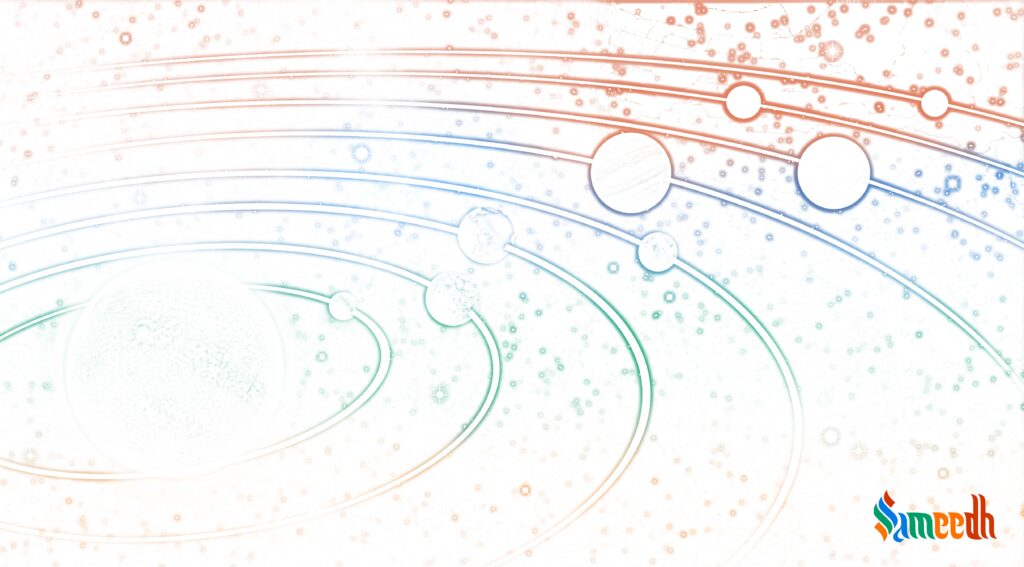In Hindu astrology, a “Dasha” refers to a planetary period during which a particular planet has a major influence on an individual’s life. The term “Dasha” itself means “state” or “condition.” The planetary periods are determined based on the positions of the planets in an individual’s birth chart or horoscope.

Dasha forms a part of Vedic astrology and ancient scriptures in Hinduism. These periods or Dasha are exhibited by the nine Grahas or planets and are closely related to their respective characteristics. It is believed that this condition has the power to influence a person’s behaviour, luck, relationships, career, health and temperament. Any Dasha lasts for a set amount of time and during that phase, it impacts the astrological charts of a person through their planetary positions and locations of constellations. These periods can have both a negative and positive effect on the planets according to their placements in birth charts. Dasha can be deduced with the help of Rashi, astrological signs, Bhava, houses, combinations of Yogas and Raja Yogas, the association of planet placements and houses.
There are various Dasha systems, Parashari astrology is known to have 42 types of Dasha systems. Out of those, only Vimshottari is commonly in use while reading astrological charts.
Vimshottari Dasha is one of the most widely used and significant Dasha systems in Vedic astrology. It is a planetary period system that divides a person’s life into major periods (Mahadasha) and sub-periods (Antardasha). The word “Vimshottari” is derived from the Sanskrit words “Vimshati,” meaning 20, and “Tari,” meaning 3, indicating a cycle of 120 years.
The most significant Dasha in a person’s life is the Mahadasha, which is a long-term period associated with a specific planet. The Mahadasha is further divided into smaller sub-periods known as Antardasha or Bhukti, where the influence of a different planet comes into play.
The order of Antardashas follows the same sequence as the Mahadasha planets. For example, if a person is in the Mahadasha of Venus (Shukra), the Antardashas will progress through the sequence of Ketu, Venus, Sun, Moon, Mars, Rahu, Jupiter, Saturn, and Mercury.
To take it a step further, Pratyantar Dasha is a further subdivision within the Antardasha. It provides an even more precise timeframe within the influence of the sub-period planet. It classifies the planetary durations down to days or hours. Such details help accurately create astrological charts and predict prominent occurrences in the future. These conditions dedicate a person’s actions and even shapes the personality during the phase when one is going through it.
In the Vimshottari Dasha system consists of several years of each of the nine planets, the order of Mahadashas is as follows:
- Ketu (Dragon’s tail) – 7 years
It makes one renounce all the worldly pleasures of life and resort towards faith and spirituality. It strips you from your loved possessions, fame and even family members at times by forcing you to detach from there. - Venus (Shukra) – 20 years
This would be the phase of love, happiness, healthy relationships and overall pleasure seeking. - Sun (Surya) – 6 years
As the Sun is self centred, this Dasha is all about finding the true self. It includes expression of self and is a period where you are brought closer to spirituality.
- Moon (Chandra) – 10 years
Chandra symbolises femininity and motherhood, making this phase revolve around marriage and family life.
- Mars (Mangal) – 7 years
The focus of this Dasha shall lie on career and ambition with both maximum determination and enthusiasm. - Rahu (Dragon’s head) – 18 years
This shadow planet brings in a state of mental confusion, indulgence in illegal activities, ruined relationships and overall hurdles in life.
- Jupiter (Guru) – 16 years
Being the Guru, this Mahadasha will keep teaching lots of lessons.
- Saturn (Shani) – 19 years
This period is filled with obstacles in attaining goals but can also engulf one in spirituality and religious practices.
- Mercury (Budha) – 17 years
This is a phase of increased intellect, communication skills like writing and speech and knowledge acquisition
These Dasha are present in three Nakshatras each right from the time of birth. This cycle repeats, and the total duration of the Vimshottari Dasha cycle is 120 years. It’s important to note that while Vimshottari Dasha is widely accepted and used in Vedic astrology, the practice of astrology itself is not considered a science, and interpretations can vary among practitioners. Individuals may choose to explore or dismiss astrological insights based on their personal beliefs and preferences.
